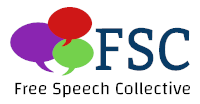Recent Posts
- DPRO Assaults Journalist in Nalanda, Bihar. Journalists Condemn Behaviour and Demand Action
- बिहार के पत्रकारों की नालंदा के निरंकुश जनसंपर्क पदाधिकारी पर कार्रवाई की मांग
- How Santosh is silenced twice—in reel and real
- Pahalgam terror attack: NWMI demands that criminal charges against political commentators be dropped
- Silencing Journalist Rupesh Kumar – 1000 Days of Incarceration


